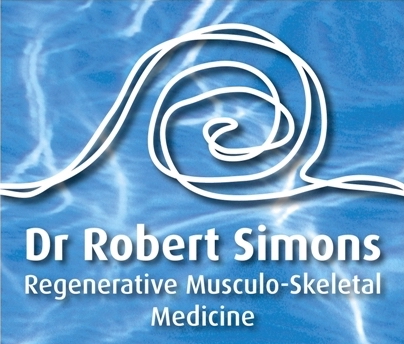Prolotherapy involves a treatment that strengthens ligaments and tendons with the aim of removing the cause of pain in and around joints.
Prolotherapy has also been proven to stimulate joint surface healing. The majority of joint pain in people under the age of 40 is caused by tendon or ligament laxity around that joint. After that age, degeneration of joints add considerably to the cause of joint pain.
Prolotherapy involves injection to the point where the ligament or tendon attaches to bone or into the joint capsule. What is injected is a substance that causes those tissues to strengthen, tighten and heal. Most prolotherapy injections can be given without radiological guidance. In the minority of cases ultrasound guidance is used.
What is Injected?
A 15% dextrose and lignocaine (a local anesthetic) is used as the starting proliferant solution. This solution is safe and causes the least discomfort as a proliferant. In situations where joints are under greater load or in sports people who are using great force in movement, stronger solutions may be used, such as Platelet Rich Plasma (see PRP information).
What to Expect
Everyone wants to know if the needles will hurt. I use the smallest possible needles I can to ensure optimum ratio of patient comfort/outcome. Some people feel no pain and others are very sensitive to the needles. It seems that attitude to needling plays a significant role to the pain experienced during treatment. The expertise of the doctor and his/her sensitivity to the patients needs are important functions in minimizing the pain of injections. In this practice we may use nitrous oxide (laughing gas) to help the patient. Please request Nitrous Oxide/Happy Gas if you are nervous about getting needles. Generally after the patient has had the first treatment and experienced its effects, the question of needle pain ceases to be a major consideration.
What Should I Expect After Treatment?
After treatment, 50% of patients experience an immediate lasting improvement in their pain. This is as a result of the neural effect as described below. The other 50% experience varying degrees of discomfort for up to three days, which is rarely as bad as their underlying condition. After this initial aggravation the pain begins to subside.
There are two levels of tissue reaction to prolotherapy. The one is the immediate interruption by local anesthetic of the pain impulses arising from the site of injury. The consequence of aneasthesia can be to normalize the excitability of a previously over-sensitized nerve. This effect can cause long term pain to just switch off.
The better-known effect of prolotherapy is to initiate a healing cascade in the tissue, which continues to exert effects for up to 3 months. Think of a cut to the skin closing over and then the scar healing and finally fading.
How Often Will I Need a Followup?
Follow up is initially done 10-14 days after the initial treatment. As a condition improves, follow-ups are spaced further apart to allow more organization to occur in the tissue between treatments.
How Many Treatments Will You Need?
Treatment of a complex pain condition is like a game of chess. I provide a treatment and then assess the response at follow-up, that then determines the subsequent choice of solution and the selection of injection sites and so on.
Usually 4-12 treatments are required to get the desired lasting outcome. In a minority of people healing is achieved in two treatments in others 15 treatments are required.
Overview
A good prolotherapy doctor is experienced in the science and the art of medicine. Fine observation of outcome patterns over time which shape the effective use of assessment techniques and treatment strategies is an essential part of being an effective prolotherapy doctor. Fine observation of body patterns and patient responses has lead me to the development of a systematic evaluation of patients and provides me with an excellent capacity to assess the patients condition, and to predict the likely outcome to suitable treatment. 85% of patients that I now see are suitable for prolotherapy and allied treatments, i.e. their pain is arising from tendon or ligament dysfunction. About 5% need surgery and about 10% have disc disease. The latter may respond to prolotherapy but usually need more technically difficult non-surgical treatment, which can be organized for the patients by referral to the appropriate doctors.
We encourage patients to engage in rehab physiotherapy and to decide for themselves how they continue to see their chiropractor, osteopath, masseur or regular physiotherapist. All these treatments have something valuable to offer patients at different times.
Prolotherapy seeks to correct the source of the pain, so that an ongoing prolotherapy treatment for the condition that is being treated is a rarity.
